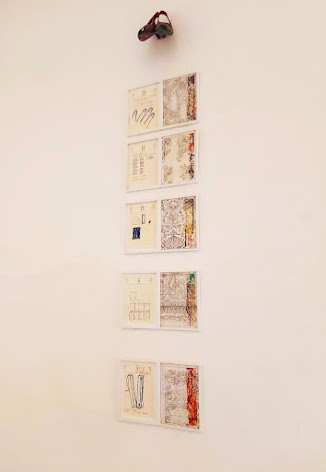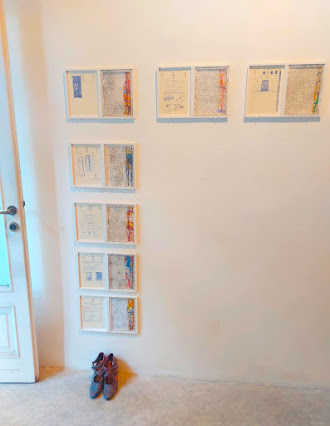Personale di Mauro Molinari
Figure
2 – 16 luglio 2025
Inaugurazione: mercoledì 2 luglio 2025, ore 18.00-21.00
Carlo Gallerati è lieto di curare e presentare Figure, una mostra personale di Mauro Molinari. Durante l’inaugurazione, performance interattiva di Gloria Bazzocchi. Catalogo in edizione limitata di 50 copie numerate e firmate dall’artista (le prime 20 con un suo intervento manuale).
Se fare l’artista significa praticare uno dei tanti possibili mestieri, è anche
vero che fare qualcosa non sempre coincide con l’esserlo. Mauro Molinari fa
l’artista e lo è. In pieno. La sua vita e la sua arte combaciano perfettamente:
chi lo conosce lo sa bene, ma basta andarlo a trovare nel suo studio di
Velletri per rendersene conto. Ti fa scoprire tele, carte, tavole, oggetti che
sono molteplici e numerosissimi – per quanto solo una parte minima della
sconfinata produzione di pittore alla quale si è sempre dedicato – e lo fa con
la stessa onestà e la stessa passione che pone in ogni momento della sua
esistenza. Con lo stesso amore. Specialmente per questo, ospitarlo nei propri
spazi è per la Galleria Gallerati di Roma un motivo di enorme soddisfazione e
di sincero orgoglio. Condurre l’attività di una galleria con intenzioni e
obiettivi analoghi a quelli che guidano il concepimento e la creazione di
un’opera d’arte ha come presupposto la concentrazione esclusiva su artisti come
Molinari. Che cioè sono tali dall’inizio alla fine, senza sconti: non andandosi
a ritagliare porzioni di tempo e di spazio per fare delle cose, bensì mettendo
in gioco tutto il proprio tempo e il proprio spazio per convertire in cose gli
umani che sentono di essere. Da gallerista e da autore – soprattutto da
energico ammiratore di Mauro persona e di Mauro artista – non posso e non
voglio qui pormi in veste di suo biografo, e tanto meno di critico del suo
lavoro. Mi contengo nel sottolineare come la selezione di opere che ho deciso
di presentare vuole offrire ai visitatori un’ulteriore eppure nuovissima
opportunità. È irresistibile farsi sommergere dal suo magico universo di trame
e di toni, di materie e di forme, di favolosi rimandi e allegoriche allusioni,
di mirabolanti intrecci e spettacolari giochi d’equilibrio tra quotidiano e
fantastico, tra concretezza e ironia. Ancora, ma con l’identica coinvolgente
curiosità di una prima volta. (Carlo Gallerati).
Video: durata 02:02
Mauro Molinari
Figure
Galleria Gallerati (Via Apuania, 55 – Roma)
Inaugurazione: mercoledì 2 luglio 2025, ore 18.00-21.00
(con la partecipazione straordinaria di Gloria Bazzocchi)
Fino a mercoledì 16 luglio 2025 (ingresso libero)
Orario: dal lunedì al venerdì: ore 17.00-19.00
(sabato, domenica e fuori orario: su appuntamento)
Curatore, Carlo Gallerati
Autore testo critico:
Ufficio stampa: Galleria Gallerati
info@galleriagallerati.it, www.galleriagallerati.it, www.mauromolinari.it
Galleria Gallerati | Via Apuania, 55 | 00162 Roma | +39.06.44258243 |
+39.347.7900049
info@galleriagallerati.it | www.galleriagallerati.it |
www.facebook.com/galleria-gallerati | #galleriagallerati
Evento segnalato da Archivio Ophen Virtual Art di Salerno



















